#九条湯
Photo
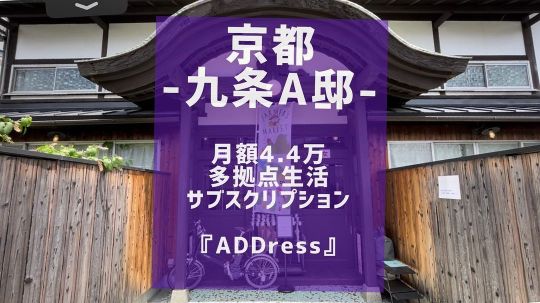
\多拠点生活36日目/ 『旅と日常』 ✄---------------‐✄ この夏、家を捨てて YouTube投稿をしながら 旅暮らしをしている大学生の 水銀くんです🚰 #addresslife 全国住み放題サブスクサービス ADDress(@address_life)を利用して 度暮らしをスタート✩.*˚ 毎日20時に日々の暮らしの様子を投稿中 𓂃 𓈒𓏸◌ 今回の滞在は京都九条A邸! 数日間お世話になりました! 普段は拠点の写真や動画を沢山撮影するのですが、今回はお部屋での作業に夢中になっていて、多く撮れませんでした😢 でもそれくらい、過ごしやすいお部屋でした! リモートワークに最適だと思います✨ 次回はコワーキングスペースも使わせて頂きます( ¨̮ ) 𓂃 𓈒𓏸 その後は、実家の京都に一時帰国。 父親に、多拠点生活1ヶ月をまとめたMVを見せました。 「ほえー」って言ってました( ˙꒳˙ ) YouTubeで『水銀くん 多拠点生活』で検索すると出てくるので、良ければご視聴くださいっ 𓂃 𓈒𓏸 夜は恒例のデュエマ対決 大学生になってからちょくちょくカードをいじり始めて、気がつけば14デッキ。 この歳になって恥ずかしいですが、やっぱり好きなんですよね。 ゲームをやらなくなった今、弟と対決しながら雑談できるコミュニケーションツールとしての役割も担っています^^ 𓂃 𓈒𓏸 弟が借りてきた映画。 この組み合わせでレンタルする人おらんやろ笑笑 どちらも視聴しました。 アウトレイジめちゃめちゃ面白かったです。指20本には入る映画ですね。 𓂃 𓈒𓏸 SHIROBAKOというアニメを作るアニメにハマっています。 制作の裏側を知れるので、全アニメ好きの方に一度は観て欲しいアニメです! 明日もきっといいことあります! また明日の20時に! 【毎日20時更新】 他の投稿はこちら👉@suigin_addresslife 歌い手アカウントはこちら👉@suigin_singer #九条湯 #京都 #ゲストハウス #九条 #コワーキングスペース #デュエマ #デュエルマスターズ #アウトレイジ #火垂るの墓 #SHIROBAKO ・ #address #多拠点生活 #大学生 #旅 #いいね返し #旅スタグラム #暮らすように旅する #水銀くん #水銀くん旅行記 #アドレスホッパー #国内旅行 #心地いい暮らし . #likeforlike #photooftheday #beautiful #followme #photography #igers #instagood (コワーケーションスペース九条湯) https://www.instagram.com/p/CiPjgCTpFV8/?igshid=NGJjMDIxMWI=
#addresslife#九条湯#京都#ゲストハウス#九条#コワーキングスペース#デュエマ#デュエルマスターズ#アウトレイジ#火垂るの墓#shirobako#address#多拠点生活#大学生#旅#いいね返し#旅スタグラム#暮らすように旅する#水銀くん#水銀くん旅行記#アドレスホッパー#国内旅行#心地いい暮らし#likeforlike#photooftheday#beautiful#followme#photography#igers#instagood
0 notes
Text
九条湯のランチ le bains publics du kujo(2023.3)

銭湯あとでしんやさい京都さんが水曜日にカフェ営業されているとのことでいきました

カルフォルニアロールなどなどケーキは抹茶に干しブドウ
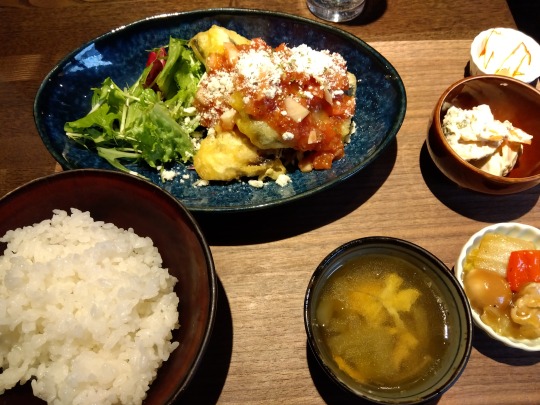
関係ないけどサケホール益やさんのランチ
0 notes
Photo

今日のお昼ごはんは宮城野区中野あたりで仕事なので近所の石臼玄麦自家製らーめん丸竈の鶏白湯らーめん塩+ばらのり+九条ネギトッピング830円+150円+100円税込(^-^)/ #石臼玄麦自家製らーめん丸竈 #らーめん丸竈 #鶏白湯らーめん #鶏白湯らーめん塩 #九条ネギトッピング #ばらのりトッピング #ラーメン #白湯らーめん #らーめん #仙台ラーメン #ramen #仙台市宮城野区 #お昼ごはん #鶏白湯 #九条ネギ #ばらのり (石臼玄麦自家製らーめん 丸竈) https://www.instagram.com/p/Cmakc-zPQbR/?igshid=NGJjMDIxMWI=
#石臼玄麦自家製らーめん丸竈#らーめん丸竈#鶏白湯らーめん#鶏白湯らーめん塩#九条ネギトッピング#ばらのりトッピング#ラーメン#白湯らーめん#らーめん#仙台ラーメン#ramen#仙台市宮城野区#お昼ごはん#鶏白湯#九条ネギ#ばらのり
1 note
·
View note
Text
長者原/大分県九重町【ウォーキング】南阿蘇から湯浦駐車場、大観望を経由してドライブ
湯浦駐車場
2022年4月13日、この日は新阿蘇大橋を見学した。
https://niyodogawa.org/blog/outdoor/walking/japan/46896/
そこから車で、湯浦駐車場(ゆのうらちゅうしゃじょう)にやってきた。
湯浦駐車場(ゆのうらちゅうしゃじょう)は、熊本県阿蘇市湯浦(くまもとけんあそしゆのうら)にある展望所だ。
阿蘇ドライブの途中にはいくつかある展望台の1つ、湯浦(ゆのうら)駐車場。
他の展望台よりも小規模ですが、内牧温泉や外輪山の絶景が見渡せます。
また、秋には「雲海」が見えることも。さらに夕日もきれいなスポットです。
【とるぱ熊本編】雄大な景色を見下ろし深呼吸!「湯浦(ゆのうら)駐車場」(阿蘇市) | JAF から引用
フォトスポットとるぱ (湯浦パーキング)
熊本県阿蘇市湯浦
(more…)

View On WordPress
#タデ原湿原#フォトスポットとるぱ#ラムサール条約#三俣山#中間湿原#久住山#九重山#九重町#国道212号線#外輪山#大分県#大観望#展望所#平治号#最高地点#木道#湯浦#湯浦駐車場#熊本県#牧ノ戸峠#玖珠郡#田野#県道11号線#県道45号線#筑後川源流の碑#野焼き#銅像#長者原#長者原ビジターセンター#阿蘇山
0 notes
Photo

On the way to Kujyu mountains ミヤマキリシマに会いたくて、2ヶ月前から計画。別府に仕事後前泊して、朝一で横断バスに乗り登山口へ。初日は標高1,300mの高さにある、九州最高地点の温泉一軒宿、法華院温泉を目指してゆるやかな登山。ここの泉質はとても気に入りました! 坊ガツルのキャンプ場、朝晩は寒かったけどまたいい思い出に♪ #大分 #竹田市 #九重連山 #坊ガツル #ミヤマキリシマ #dynamic #scenery #草原 #湿原 #ラムサール条約登録湿地 #法華院温泉山荘 #大船山 #location #秘湯 #長者原 #三俣山 #テント #mountain #絶景 #may #japan #nature #beautiful #green #nature #trees #holiday #popular #panorama #百名山 #sky (坊ガツル) https://www.instagram.com/p/CebRkAqBvDJ/?igshid=NGJjMDIxMWI=
#大分#竹田市#九重連山#坊ガツル#ミヤマキリシマ#dynamic#scenery#草原#湿原#ラムサール条約登録湿地#法華院温泉山荘#大船山#location#秘湯#長者原#三俣山#テント#mountain#絶景#may#japan#nature#beautiful#green#trees#holiday#popular#panorama#百名山#sky
0 notes
Quote
今回の報告書で「消滅可能性自治体」とされた自治体は、以下の通り。
【北海道】
函館市、小樽市、釧路市、夕張市、岩見沢市、網走市、留萌市、稚内市、美唄市、芦別市、赤平市、紋別市、士別市、三笠市、根室市、砂川市、歌志内市、深川市、富良野市、登別市、伊達市、北斗市、当別町、新篠津村、松前町、福島町、知内町、木古内町、鹿部町、森町、八雲町、長万部町、江差町、上ノ国町、厚沢部町、乙部町、奥尻町、今金町、せたな町、島牧村、寿都町、黒松内町、京極町、共和町、岩内町、泊村、神恵内村、、積丹町、古平町、余市町、赤井川村、南幌町、奈井江町、上砂川町、由仁町、長沼町、栗山町、月形町、妹背牛町、雨竜町、北竜町、沼田町、当麻町、比布町、愛別町、上川町、上富良野町、和寒町、剣淵町、美深町、音威子府村、幌加内町、増毛町、小平町、苫前町、羽幌町、遠別町、浜頓別���、中頓別町、枝幸町、豊富町、利尻町、美幌町、津別町、清里町、小清水町、訓子府町、佐呂間町、遠軽町、湧別町、滝上町、西興部村、雄武町、大空町、豊浦町、白老町、洞爺湖町、むかわ町、日高町、平取町、浦河町、様似町、えりも町、新ひだか町、士幌町、広尾町、池田町、豊頃町、本別町、浦幌町、釧路町、厚岸町、浜中町、標��町、弟子屈町、白糠町、羅臼町
【青森県】
青森市、弘前市、八戸市、黒石市、五所川原市、十和田市、むつ市、つがる市、平川市、平内町、今別町、蓬田村、外ヶ浜町、鰺ヶ沢町、深浦町、藤崎町、大鰐町、板柳町、鶴田町、中泊町、野辺地町、七戸町、横浜町、東北町、六ヶ所村、大間町、東通村、風間浦村、佐井村、三戸町、五戸町、田子町、南部町、階上町、新郷村
【岩手県】
宮古市、大船渡市、久慈市、遠野市、一関市、陸前高田市、釜石市、二戸市、八幡平市、奥州市、雫石町、葛巻町、岩手町、西和賀町、平泉町、住田町、大槌町、山田町、岩泉町、田野畑村、��代村、軽米町、野田村、九戸村、洋野町、一戸町
【宮城県】
石巻市、気仙沼市、白石市、角田市、登米市、栗原市、蔵王町、七ヶ宿町、村田町、川崎町、丸森町、松島町、七ヶ浜町、大郷町、色麻町、加美町、涌谷町、女川町、南三陸町
【秋田県】
能代市、横手市、大館市、男鹿市、湯沢市、鹿角市、由利本荘市、潟上市、大仙市、北秋田市、にかほ市、仙北市、小坂町、上小阿仁村、藤里町、三種町、八峰町、五城目町、八郎潟町、井川町、大潟村、美郷町、羽後町、東成瀬村
【山形県】
鶴岡市、酒田市、新庄市、上山市、村山市、長井市、尾花沢市、山辺町、中山町、河北町、西川町、朝日町、大江町、大石田町、金山町、最上町、舟形町、真室川町、大蔵村、鮭川村、戸沢村、高畠町、川西町、小国町、白鷹町、飯豊町、庄内町、遊佐町
【福島県】
会津若松市、白河市、喜多方市、二本松市、田村市、伊達市、桑折町、国見町、川俣町、天栄村、下郷町、檜枝岐村、只見町、南会津町、北塩原村、西会津町、猪苗代町、会津坂下町、三島町、金山町、会津美里町、泉崎村、棚倉町、矢祭町、塙町、鮫川村、石川町、玉川村、平田村、浅川町、古殿町、三春町、小野町
【茨城県】
日立市、常陸太田市、高萩市、北茨城市、潮来市、常陸大宮市、稲敷市、桜川市、行方市、鉾田市、城里町、大子町、美浦村、河内町、八千代町、五霞町、利根町
【栃木県】
日光市、矢板市、那須烏山市、益子町、茂木町、市貝町、塩谷町、那珂川町、
【群馬県】
桐生市、沼田市、渋川市、藤岡市、富岡市、安中市、上野村、神流町、下仁田町、南牧村、甘楽町、中之条町、長野原町、嬬恋村、草津町、東吾妻町、片品村、みなかみ町、玉村町、板倉町
【埼玉県】
行田市、秩父市、越生町、小川町、川島町、吉見町、鳩山町、ときがわ町、横瀬町、皆野町、長瀞町、小鹿野町、東秩父村、神川町、寄居町、松伏町
【千葉県】
銚子市、勝浦市、富津市、八街市、南房総市、匝瑳市、香取市、山武市、いすみ市、栄町、神崎町、多古町、東庄町、九十九里町、芝山町、横芝光町、白子町、長柄町、長南町、大多喜町、御宿町、鋸南町
【東京都】
檜原村、奥多摩町
【神奈川県】
三浦市、中井町、山北町、箱根町、真鶴町、湯河原町
【新潟県】
小千谷市、加茂市、十日町市、村上市、糸魚川市、妙高市、五泉市、阿賀野市、佐渡市、魚沼市、胎内市、田上町、阿賀町、出雲崎町、湯沢町、津南町、関川村、粟島浦村
【富山県】
氷見市、南砺市、上市町、入善町、朝日町
【石川県】
七尾市、輪島市、珠洲市、加賀市、羽咋市、志賀町、宝達志水町、穴水町、能登町、
【福井県】
大野市、勝山市、あわら市、池田町、南越前町、越前町、高浜町、若狭町
【山梨県】
都留市、大月市、韮崎市、上野原市、甲州市、早川町、身延町、南部町、富士川町、道志村、西桂町
【長野県】
大町市、飯山市、小海町、佐久穂町、立科町、長和町、阿南町、阿智村、平谷村、天龍村、上松町、南木曽町、王滝村、大桑村、木曽町、生坂村、筑北村、小谷村、坂城町、高山村、山ノ内町、木島平村、信濃町、小川村、飯綱町、栄村
【岐阜県】
美濃市、瑞浪市、恵那市、山県市、飛騨市、郡上市、下呂市、海津市、養老町、関ケ原町、揖斐川町、池田町、七宗町、八百津町、白川町、東白川村
【静岡県】
熱海市、下田市、伊豆市、御前崎市、牧之原市、東伊豆町、松崎町、西伊豆町、川根本町
【愛知県】
津島市、新城市、南知多町、美浜町、設楽町、東栄町、豊根村
【三重県】
尾鷲市、鳥羽市、熊野市、志摩市、木曽岬町、大台町、度会町、大紀町、南伊勢町、紀北町、御浜町、紀宝町
【滋賀県】
高島市、甲良町
【京都府】
宮津市、京丹後市、井手町、宇治田原町、笠置町、和束町、南山城村、京丹波町、与謝野町
【大阪府】
富田林市、河内長野市、柏原市、門真市、泉南市、阪南市、豊能町、能勢町、岬町、太子町、河南町、千早赤阪村
【兵庫県】
洲本市、西脇市、加西市、養父市、朝来市、宍粟市、多可町、市川町、神河町、上郡町、佐用町、香美町、新温泉町
【奈良県】
大和高田市、五條市、御所市、宇陀市、山添村、安堵町、三宅町、曽爾村、御杖村、高取町、上牧町、河合町、吉野町、大淀町、下市町、黒滝村、野迫川村、十津川村、下北山村、上北山村、川上村、東吉野村
【和歌山県】
海南市、橋本市、有田市、御坊市、田辺市、新宮市、紀の川市、紀美野町、かつらぎ町、九度山町、高野町、湯浅町、広川町、美浜町、由良町、みなべ町、日高川町、白浜町、すさみ町、那智勝浦町、太地町、古座川町、串本町
【鳥取県】
岩美町、若桜町、智頭町、八頭町、大山町、日南町、日野町、江府町
【島根県】
雲南市、奥出雲町、津和野町、隠岐の島町
【岡山県】
玉野市、笠岡市、井原市、高梁市、新見市、備前市、真庭市、美作市、久米南町、吉備中央町
【広島県】
竹原市、府中市、安芸高田市、江田島市、安芸太田町、神石高原町
【山口県】
萩市、長門市、美祢市、周防大島町、上関町、田布施町、平生町、阿武町
【徳島県】
鳴門市、小松島市、吉野川市、阿波市、美馬市、三好市、勝浦町、佐那河内村、神山町、那賀町、牟岐町、美波町、海陽町、上板町、つるぎ町、東みよし町
【香川県】
さぬき市、東かがわ市、土庄町、琴平町
【愛媛県】
宇和島市、八幡浜市、大洲市、四国中央市、西予市、上島町、久万高原町、内子町、伊方町、松野町、鬼北町、愛南町
【高知県】
室戸市、安芸市、須崎市、宿毛市、土佐清水市、四万十市、東洋町、奈半利町、田野町、安田町、北川村、本山町、大豊町、いの町、仁淀川町、中土佐町、佐川町、越知町、檮原町、日高村、津野町、四万十町、大月町、三原村、黒潮町
【福岡県】
嘉麻市、小竹町、鞍手町、東峰村、添田町、川崎町、みやこ町、築上町
【佐賀県】
多久市、玄海町、大町町、白石町、太良町
【長崎県】
平戸市、松浦市、対馬市、壱岐市、五島市、西海市、雲仙市、南島原市、東彼杵町、小値賀町、新上五島町
【熊本県】
水俣市、上天草市、天草市、美里町、和水町、小国町、産山村、高森町、山都町、氷川町、芦北町、津奈木町、多良木町、湯前町、相良村、山江村、球磨村、苓北町
【大分県】
佐伯市、臼杵市、津久見市、竹田市、杵築市、豊後大野市、国東市、姫島村、九重町、玖珠町
【宮崎県】
串間市、えびの市、高原町、国富町、諸塚村、椎葉村、美郷町、高千穂町、日之影町
【鹿児島県】
枕崎市、阿久根市、西之表市、垂水市、曽於市、南九州市、三島村、さつま町、湧水町、錦江町、南大隅町、肝付町、大和村、喜界町、天城町
【全744自治体リスト】「消滅可能性自治体」を一挙公開…北海道から鹿児島まで 出産年代の女性人口が半数以下に 日光市や草津町も |FNNプライムオンライン
2 notes
·
View notes
Text
20240107 湯呑が買えない
20年来つかっていた湯呑が割れてしまった。九谷焼の安い湯呑茶碗で、五客そろいだったもののひとつ、夏こそ棚にしまわれたままになるが、春秋冬と活躍してきた。他にもいくつか余っているのが家にはあるはあるのだが、何しろ長いことつかっていたので、ずいぶんと手になじんでしまっている。家では煎茶はあまり飲まない。ほうじ茶むけの少しぼってりしたかたちが好みである。
こういった手にするものはネットで見ていてもさっぱりわからないので、現物をさがすより他にはない。と、いうことでちょっと見にゆくことにした。焼き物といえば、京都では清水だが、観光客も多いのであまりちかよりたくない。たち吉もずいぶん前に京都から姿を消してしまった。ショッピングセンターの催事などでたまに陶器市を見かけるが、かんがえてみれば、売っているところが減っているような気もする。ニトリや無印では面白くないし、デザインが今風にすぎる。
結局のところ、イオンやホームセンターの食器をあつかっているところをのぞくことになった。そしてわかったのは、驚くほど置いてある量がすくない、ということだった。びっくりしました。イオンの洛南店(九条)にいったら、食器そのものも少なかったのだけど、湯呑が一個しか置いてなかった。
一個。
かなりに衝撃的な数である。探している場所がちがうのではないかとあれこれぐるぐるまわったのだけど、やはり無い。『インディ・ジョーンズ』の聖杯だってもうちょっとある中からハリソン君は選んでいたのに、である。
帰りに自転車に乗りながら、すでに湯呑でお茶を飲んでいる人間というのは、かなり珍しい部類に入ってきたのではないか、とかんがえてみたりもした。家にはあるけどつかってない、とか、職場や学校の食堂でプラスチックの湯呑でお茶を飲むことはあるけど、自分では持っていない、とか、すでに贅沢品であるとか、そういった領域に入ってきている気がしてきた。
結局、手ぶらで帰ることになった。仕方ないものは仕方ない。
2 notes
·
View notes
Text
2023年5月26日(金)

昨日から水に漬けておいた実山椒(約150g)、夕飯後に塩煮にする。1.5Lのお湯を沸かして塩小さじ1、3〜4分煮た後で笊にとって水洗い。再び1.5Lの水に酒150cc、塩45gを沸かし、実山椒を入れて15分煮る。後はそのまま漬けおくだけ、塩水につけた状態で冷蔵庫で保存する。よし、これで準備完了、明日はいよいよ<ちりめん山椒>に取り組むのだ。

5時起床。
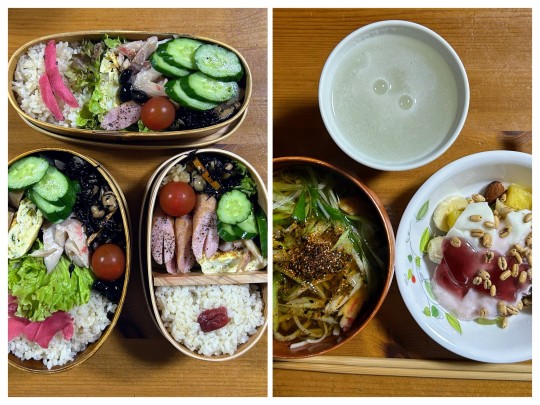
朝食、洗濯、弁当*3。
可燃ゴミ、30L*1。
ツレアイの職場経由で出勤する。
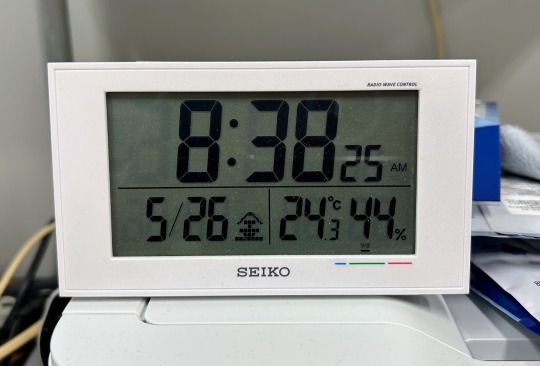
順調に到着する。
換気、ラジオ体操、お茶。
金曜日は2限・3限<スタディスキルズ(栄養学科)>、今週は<レポートのためのメモ作り>、個人差は当然あるが2クラスとも時間内に仕上げて提出してくれた。
週末なのでゴミを片付けて退出、いつものようにO姉を九条大宮で降ろしてから帰宅。

SOU・SOUから先日の不足の足袋下が届いていた。1片のメモもなし、なるほど、配送担当はただ指示に従って作業するだけなのかな。

昨日の残りの豚バラ肉を使って無水肉じゃが、やはり昨日の見切り品のカツオのたたきをさっと焼いて目玉焼きを添える。ツレアイも何とか間に合って4人揃っての食事。
録画番組視聴。
(50)「五匹の子豚」
世界が愛した名探偵、エルキュール・ポワロ。アガサ・クリスティー原作の人気ドラマシリーズ。夫殺しで死刑になった母親の無実を信じる娘。ポワロは彼女を救えるか?
夫殺しの罪で死刑になった母親の無実を証明してほしいと、ルーシーから依頼されたポワロ。ルーシーには無実を訴える母キャロラインの手紙が残されていた。ポワロは当時の事件関係者を訪ねて話を聞く。画家だったルーシーの父は、次々に愛人を作り妻と口論が絶えなかったという。そこに絵のモデルとしてエルサという若い女性が現れたのが、事件の始まりだった。
放送を見ながら、実山椒の塩煮をつくる。
片付け、入浴、体重は一昨日から450g減。

水金は昼をはさんで授業があるので、普通にするだけで3つのリングは完成、歩数もそこそこになる。水分は、1,880ml。
5 notes
·
View notes
Text
ウェブサイト ペルシャ絨毯買取専門店港区
ペルシャ絨毯買取専門店 どこよりもペルシャ絨毯を高く買います。| ウェブサイト ペルシャ絨毯買取専門店港区
( 国内でどこでも、絨毯販売 や ペルシャ絨毯買取 , 絨毯買取をします。)
絨毯専門店として、ペルシャ絨毯買取 絨毯買取 絨毯専門 ヘレケ絨毯買取 絨毯下取り ペルシャ絨毯 アンティーク絨毯買取 シルク絨毯買取 絨毯 買取 じゅうたん買取 中古絨毯買取 汚れた絨毯 じゅたん買取 絨毯 買取 ペルシャ絨毯買取 ペルシア絨毯 買取 クム絨毯 買取 絨毯買取 絨毯販売 ペルシア絨毯買取 絨毯クリーニング ペルシャ絨毯クリーニング ペルシア絨毯買取があれば体調しますので、よろしくお願いします。
ウェブサイト ペルシャ絨毯買取専門店港区
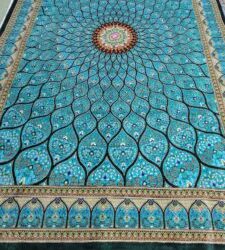
無料出張 対応エリア
全国の出張購入をサポートします。
ショッピングブーストゾーン全国からカーペットを集めています!
ショッピングをサポートするエリアは、
東京、神奈川、千葉、埼玉、茨城、栃木、軍馬、愛知、静香、新潟、長野、
山梨、京都、大阪、福岡、山口、大分、佐賀、福井県、熊本です。
ペルシャ絨毯買取専門店港区 ペルシャ絨毯を高く買取します。
全国でもご利用いただけますので、上記以外の方も大歓迎です! 無料評価をご利用ください。
ペルシャ絨毯買取なら買取実績豊富な港区絨毯買取へ
ペルシャ絨毯を買取に出したい
ペルシャ絨毯の価値を知りたい
ペルシャ絨毯を売るなら港区絨毯買取をお選びください。
売りたいけれど重くて持ち運べないという方は、ぜひ港区絨毯買取の出張買取をご利用ください。
重いペルシャ絨毯を持ち運ばず楽に売却できます。査定料、出張料などの手数料は無料です!
絨毯に熟知している査定員が多数在籍していますので、安心して港区絨毯買取にお任せください。
( このサイトを閲覧されているということは、「ペルシャ絨毯を処分したい )
土日・祝日も休まず営業!どしどしお問合せください!

お客様に信頼・ご満足いただける買取値段をご提示致します。
※買取強化エリアおよびスピード引き取り対応可能エリア
【東京23区】
千代田区 中央区 港区 新宿区 文京区 台東区 墨田区 江東区 品川区 目黒区 大田区 世田谷区 渋谷区 中野区 杉並区 豊島区 北区 荒川区 板橋区 練馬区 足立区 葛飾区 江戸川区
【東京都下】
八王子市 立川市 武蔵野市 三鷹市 青梅市 府中市 昭島市 調布市 町田市 小金井市 小平市 日野市 東村山市 国分寺市 国立市 西東京市 福生市 狛江市 東大和市 多摩市 稲城市 羽村市 あきる野市
出張費、鑑定料一切無料
日本全国買取出張いたします!下記地域は即日出張可能です!
※他のご依頼の状況、時間帯によって不可の場合がございます。
北海道
札幌市東区・札幌市北区・札幌市・札幌市中央区・札幌市豊平区・札幌市西区・札幌市白石区・札幌市南区・札幌市手稲区・札幌市厚別区・札幌市清田区・旭川市・函館市・苫小牧市・釧路市・帯広市・小樽市・北見市・室蘭市・江別市・千歳市・岩見沢市・恵庭市・北広島市・石狩市・登別市・北斗市・音更町・滝川市・網走市・稚内市・伊達市・名寄市・根室市・七飯町・幕別町・美唄市・新ひだか町・紋別市・留萌市・富良野市・中標津町・深川市・遠軽町・美幌町・士別市・余市町・釧路町・白老町・砂川市・芽室町・八雲町・当別町・森町・芦別市・別海町・倶知安町・岩内町・浦河町・日高町・栗山町・斜里町・長沼町・赤平市・上富良野町・美瑛町・夕張市・厚岸町・三笠市・洞爺湖町・湧別町
青森県
青森市・六戸町・大鰐町・弘前市・八戸市・十和田市・むつ市・五所川原市・三沢市・つがる市・黒石市・平川市・おいらせ町・南部町・東北町・五戸町・七戸町・板柳町・階上町・野辺地町・鶴田町・平内町・中泊町・鰺ヶ沢町・三戸町・六ヶ所村・藤崎町
岩手県
八幡平市・矢巾町・陸前高田市・山田町・雫石町・洋野町・金ケ崎町・大槌町・岩手町・一戸町・岩泉町・軽米町・盛岡市・一関市・奥州市・花巻市・北上市・宮古市・滝沢市・大船渡市・釜石市・久慈市・二戸市・紫波町・遠野市
秋田県
大仙市・由利本荘市・大館市・能代市・湯沢市・北秋田市・鹿角市・男鹿市・潟上市・仙北市・にかほ市・美郷町・三種町・五城目町・羽後町・秋田市・横手市
山形県
新庄市・上山市・南陽市・長井市・村山市・高畠町・庄内町・河北町・遊佐町・白鷹町・山辺町・中山町・尾花沢市・川西町・山形市・鶴岡市・酒田市・米沢市・天童市・東根市・寒河江市
栃木県
芳賀町・茂木町・塩谷町・市貝町・宇都宮市・小山市・栃木市・足利市・佐野市・那須塩原市・鹿沼市・日光市・真岡市・大田原市・下野市・さくら市・壬生町・矢板市・上三川町・高根沢町・那須烏山市・那須町・野木町・益子町・那珂川町
宮城県
仙台市太白区・仙台市泉区・仙台市若林区・仙台市宮城野区・石巻市・大崎市・登米市・栗原市・名取市・気仙沼市・多賀城市・塩竈市・富谷町・東松島市・岩沼市・柴田町・白石市・亘理町・利府町・角田市・加美町・大和町・美里町・大河原町・七ヶ浜町・仙台市青葉区・仙台市
福島県
いわき市・郡山市・伊達市・白河市・二本松市・喜多方市・田村市・相馬市・本宮市・福島市・須賀川市・会津若松市・南相馬市
茨城県
結城市・小美玉市・鉾田市・阿見町・北茨城市・稲敷市・桜川市・常陸大宮市・下妻市・つくばみらい市・かすみがうら市・行方市・東海村・茨城町・高萩市・潮来市・境町・八千代町・城里町・大子町・大洗町・利根町・美浦村・河内町・五霞町・水戸市・つくば市・日立市・ひたちなか市・土浦市・古河市・取手市・筑西市・神栖市・牛久市・龍ケ崎市・石岡市・笠間市・鹿嶋市・常総市・守谷市・常陸太田市・坂東市・那珂市
新潟県
新潟市・新潟市中央区・新潟市西区・新潟市東区・新潟市北区・新潟市秋葉区・新潟市江南区・新潟市西蒲区・新潟市南区・長岡市・上越市・三条市・新発田市・柏崎市・燕市・村上市・南魚沼市・佐渡市・十日町市・五泉市・糸魚川市・阿賀野市・見附市・魚沼市・小千谷市・妙高市・胎内市・加茂市・阿賀町・聖籠町・田上町・津南町
群馬県
高崎市・太田市・前橋市・伊勢崎市・桐生市・渋川市・館林市・藤岡市・安中市・富岡市・みどり市・大泉町・沼田市・玉村町・邑楽町・みなかみ町・吉岡町・中之条町・板倉町・東吾妻町・榛東村・甘楽町・千代田町・明和町・嬬恋村・下仁田町・昭和村・草津町・長野原町
埼玉県
三芳町・寄居町・宮代町・皆野町・さいたま市・さいたま市浦和区・さいたま市南区・さいたま市岩槻区・松伏町・さいたま市緑区・さいたま市大宮区・さいたま市桜区・上里町・川島町・富士見市・春日部市・上尾市・熊谷市・吉見町・嵐山町・滑川町・桶川市・蕨市・鶴ヶ島市・志木市・鴻巣市・加須市・北本市・杉戸町・鳩山町・神川町・越生町・小鹿野町・新座市・ときがわ町・美里町・蓮田市・伊奈町・東松山市・行田市・飯能市・八潮市・本庄市・和光市・秩父市・入間市・深谷市・三郷市・戸田市・吉川市・ふじみ野市・坂戸市・日高市・羽生市・幸手市・白岡市・小川町・狭山市・朝霞市・久喜市・さいたま市中央区・さいたま市西区・川口市・川越市・所沢市・越谷市・草加市・さいたま市見沼区・さいたま市北区・毛呂山町
千葉県
千葉市中央区・佐倉市・浦安市・習志野市・流山市・野田市・我孫子市・木更津市・成田市・茂原市・鎌ケ谷市・君津市・千葉市緑区・船橋市・富里市・大網白里市・館山市・富津市・南房総市・いすみ市・栄町・勝浦市・九十九里町・松戸市・印西市・四街道市・香取市・銚子市・千葉市稲毛区・千葉市若葉区・千葉市美浜区・市川市・柏市・市原市・八千代市・匝瑳市・鴨川市・横芝光町・酒々井町・八街市・旭市・東金市・袖ケ浦市・白井市・山武市・千葉市・千葉市花見川区
東京都
品川区・東久留米市・昭島市・稲城市・東大和市・あきる野市・狛江市・国立市・墨田区・目黒区・文京区・渋谷区・港区・中野区・豊島区・三鷹市・立川市・東村山市・多摩市・青梅市・武蔵野市・江戸川区・杉並区・板橋区・江東区・葛飾区・日野市・世田谷区・練馬区・清瀬市・武蔵村山市・大田区・福生市・瑞穂町・羽村市・日の出町・足立区・北区・新宿区・荒川区・台東区・中央区・千代田区・国分寺市・小金井市・八王子市・町田市・府中市・調布市・西東京市・小平市
神奈川県
寒川町・厚木市・小田原市・鎌倉市・秦野市・座間市・海老名市・伊勢原市・綾瀬市・逗子市・三浦市・横浜市金沢区・横浜市保土ケ谷区・横浜市都筑区・横浜市南区・横浜市緑区・南足柄市・愛川町・大磯町・葉山町・二宮町・川崎市・川崎市中原区・川崎市宮前区・川崎市高津区・川崎市多摩区・川崎市川崎区・川崎市麻生区・川崎市幸区・相模原市・相模原市南区・相模原市中央区・相模原市緑区・横須賀市・藤沢市・横浜市・平塚市・横浜市瀬谷区・横浜市栄区・横浜市西区・茅ヶ崎市・大和市・大井町・湯河原町・開成町・箱根町・山北町・松田町・中井町・横浜市磯子区・横浜市港北区・横浜市青葉区・横浜市戸塚区・横浜市鶴見区・横浜市旭区・横浜市神奈川区・横浜市泉区・横浜市港南区・横浜市中区
静岡県
静岡市・島田市・裾野市・沼津市・浜松市・袋井市・藤枝市・富士市・富士宮市・三島市・西伊豆町・松崎町・南伊豆町・河津町・東伊豆町・小山町・長泉町 ・清水町・函南町・伊豆の国市・牧之原市・焼津市・熱海市・伊豆市・伊東市・磐田市・御前崎市・掛川市・菊川市・御殿場市
山梨県
甲府市・甲斐市・南アルプス市・笛吹市・富士吉田市・北杜市・山梨市・甲州市・韮崎市・都留市・中央市・大月市・上野原市・富士河口湖町・昭和町・市川三郷町・富士川町・身延町・南部町
長野県
軽井沢町・下諏訪町・辰野町・長野市・上田市・飯田市・佐久市・松本市・茅野市・千曲市・塩尻市・伊那市・安曇野市・飯山市・大町市・東御市・駒ケ根市・小諸市・中野市・諏訪市・須坂市・岡谷市・箕輪町
石川県
能登町・珠洲市・中能登町・宝達志水町・穴水町・川北町・七尾市・加賀市・野々市市・能美市・津幡町・輪島市・金沢市・白山市・小松市・かほく市・内灘町・羽咋市・志賀町
富山県
上市町・朝日町・舟橋村・富山市・高岡市・射水市・南砺市・氷見市・立山町・砺波市・魚津市・黒部市・滑川市・小矢部市・入善町
愛知県
名古屋市・名古屋市中区・名古屋市中村区・名古屋市東区・名古屋市西区・名古屋市北区・名古屋市千種区・名古屋市昭和区・名古屋市瑞穂区・名古屋市天白区・名古屋市熱田区・名古屋市緑区・名古屋市名東区・名古屋市守山区・名古屋市中川区・名古屋市南区・名古屋市港区・一宮市・あま市・稲沢市・幡豆郡・

ペルシャ絨毯買取専門店
当店は東京都港区、埼玉県川越市、神奈川県横浜市を拠点に
関東全域にてペルシャ絨毯の出張買取を致します。
お引越しや模様替え、リフォームや家の解体などで使わなくなります
ペルシャ絨毯、高級絨毯、ブランド絨毯、ブランドラグの買取を行っています。
また、織が良い物は絨毯ほかキリム・ギャッベも買取致します。
お住まいが遠方の方は便利な宅配買取をご利用ください。(下部参照)
当店はリビング用の絨毯から玄関用の小さな絨毯まで幅広く取り扱っております。
併せまして高級家具や高級時計、ブランド品、エルメスやクリストフル
マイセン、リヤドロやラリックなどの西洋アンティーク、銀製品なども買取致します。
私どもはペルシャ絨毯買取やアンティーク買取に自信を持っております。
満足いただけますよう精いっぱいで査定させていただきます。
ぜひペルシャ絨毯買取はペルシャ絨毯買取 専門にお任せください。
Read the full article
#minatokucarpet#minatokucarpettokyojp#minatokucarpetcom#persiancarpetjapan#persianrugsjapan#ウェブサイトペルシャ絨毯買取専門店港区
6 notes
·
View notes
Photo



料理系MOD入れたらお湯を沸かすアニメーションが増えた
Sims4
IDOLiSH7
アイナナシムズ
いおりく
ナナセコム
九条天
4 notes
·
View notes
Text
Nampō Roku, Book 7 (23c), Appendix 2: Kaki-ire [書入].

○ Kaki-ire [書入]:
The chasen-tōshi should also be understood in the same way as what has just been said [with regard to the momi-te]¹.
When [performing the chasen-tōshi], if the tines of the chasen become too soft, it will not be possible to tap it [audibly] against [the rim of] the chawan². And again, during the winter (and at other such [times of the year when it is cold]), if strongly boiling water is poured into the chawan, [we] should always be concerned that it does not crack, so it is not a good idea to tap [the chasen against the rim of the bowl in that season of the year]³.

This [tapping the chasen against the rim of the chawan] is also based on the rules that describe the rituals of the Shingon and Tendai sects⁴. When the vessel is tapped, if that which [it contains] is [ritually] unclean, it is purified: this is found in the ritual for blessing holy water⁵.
While the morpheme⁶ “RAM” [ रँ, 囕] is being intoned, [the vessel containing the water that will be blessed] is tapped twenty-one times with the sanjō [散杖]⁷. And then, while chanting “VAM” [ वँ, 畔], [the vessel] is tapped twenty-one times⁸.
Afterward [incense, flowers, and other] offerings are made [to the Buddha], following the same procedures, while chanting “HŪM” [ हूँ, 𤙖]⁹. From this [ritual], one feels that every impurity has been completely cleaned away¹⁰.

The chawan is passed [back and forth] between [the host and his] guests again and again; yet only one [chawan] is used¹¹. [This might make them feel uncomfortable,] particularly when the guests do not know who may have been drinking before them¹². Because this might seem unpleasant, the three taps [of the chasen against the rim of the chawan] at the beginning [of the temae] seem to make [us] think about the “RAM-VAM-[H]ŪM” of the triple invocation¹³. And again, later [in the temae] when rinsing [the chasen], [tapping the chasen against the rim of the bowl twice reminds us of] the double-invocation of “RAM-VAM” -- and with that, [the chawan] will be cleansed¹⁴. Borrowed [originally] from the Shingon [ritual], we [also] do things in this way¹⁵.
([Shibayama’s note:] “RAM-VAM” refers to fire and water.)¹⁶
_________________________
◎ This kaki-ire , which discusses the practice of allowing the handle of the chasen to tap against the rim of the chawan during the performance of the chasen-tōshi [茶筅通し], is not found in the Enkaku-ji manuscript of Book Seven of the Nampō Roku. Nevertheless, both Shibayama Fugen and Tanaka Senshō include this text in their commentaries (Tanaka places it after the longer version of the text, as is most appropriate, since that is the version to which it was originally appended), so I felt it would be good to include it in this translation as well -- leaving it up to the reader to decide how important the material is*.
The way this kaki-ire is written suggests that it was added much later than many of the other emendations that are found throughout the different books of the Nampō Roku, and clearly reflects the machi-shū style of temae that appeared during the seventeenth century, following Sōtan’s rise to prominence.
With respect to this text, Tanaka writes “[this] is a brief note appended to the text, which is very relevant. The [form of the] chasen-tōji [茶筅湯じ]† was derived from the rules detailing the Shingon kaji-kitō [加持祈禱]‡ ritual. This idea has been completely deleted from the popular books [about chanoyu]. [Furthermore,] no mention of this is made in any of the [collections of] secret teachings, not even in Hiden kū-ka-jō [秘伝九ヶ条]**. It is regrettable that Jitsuzan koji [実山居士]†† misrepresented the text [of entry 23] in many places [through his numerous editorial deletions].‡‡”
Nevertheless, we must take this lament with a grain of salt, since it was precisely esoterica of this sort that held a fascination for Tanaka Senshō***
I would like to thank Søren M. Chr. Bisgaard Sōen [宗園] sensei (who also uses the Japanese-language name Bisugō [飛壽胡]), in Kyōto, for his help reading the three Sanskrit morphemes that are found in this kaki-ire, as well as for his very detailed explanations of their meanings.
__________
*As I mentioned in the first appendix (at the end of the previous post), this entry (and so, the kaki-ire that was appended to it) represents the machi-shū perspective that was supplanting Rikyū’s own teachings in the years following his death, in an effort to “restore” chanoyu to the state it had been in during Jōō’s middle period (that is, during the decade or so before Rikyū returned from the continent toward the end of autumn in 1554) -- or, at least, that is what the machi-shū followers of Imai Sōkyū believed they were doing.
According to Rikyū’s own densho, the chasen should not produce an audible sound when it is rested against the rim of the chawan during the chasen-tōshi.
†Chasen-tōji [茶筅湯じ] is usually written chasen-tōshi [茶筌通し] (or, chasen-tōji [茶筌通じ]) today. Tanaka’s term means “putting the chasen in hot water,” while the more common expression means something like “to look the chasen over.”
‡The kaji-kitō [加持祈禱] is a Shingon ritual designed to pray for divine intervention (by the Shintō Gods and the Buddhas), to deliver humanity from sickness and other calamities.
Kaji [加持] is a translation of the Sanskrit word adhiṣṭhāna [ अधिष्ठान ], which means initiations or blessings. Paraphrasing from the Wikipedia article, in Shingon Buddhism, this includes the chanting of mantras, mudras (ritualized hand-gestures), and visualization exercises aim at achieving honzon-kaji [本尊加持] -- union with the enshrined Buddha-form.
Professor Emeritus Minoru Kiyota (1923 ~ 2013), of the University of Wisconsin-Madison, identified three kinds of adhiṣṭhāna in the theory and practice of Shingon Buddhism: mudra, the finger sign [gesticulation]; dhāraṇī, [the chanting of]secret verses; and yoga [...].
**Hiden kū-ka-jō [秘伝九ヶ条] is one of the titles used for the first of the two books of secret teachings that were appended to the Nampō Roku by Tachibana Jitsuzan and the Enkaku-ji scholars. According to Kanshū oshō-sama, access to these two books was even more closely restricted than to the Nampō Roku itself.
††Jitsuzan koji [実山居士] was the name used by Tachibana Jitsuzan after his retirement. His actual name was Tachibana Shigemoto [立花重根; 1655 ~ 1708].
He received the name Jitsuzan koji when he retired and became nyū-dō [入道].
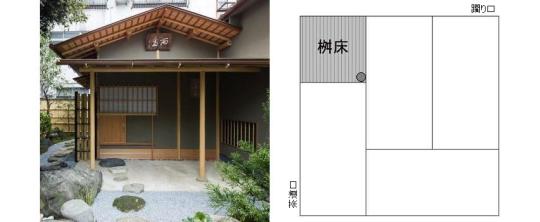
Jitsuzan established the Tōrin-ji [東林寺] (a small sub-temple, consisting of a moderately sized Buddha hall, with residential buildings, a dedicated room for za-zen, a shoin, and the Jisei-an [而生庵] (above) -- a 4-mat tearoom arranged like a yojō-han (with a masu-doko [桝床], a square toko that takes the place of the half-mat, located at the far end of the utensil mat, in the corner of the room) -- which he constructed in front of the main gate of the original Enkaku-ji (now the site of Hakata Train Station) in 1696. The Tōrin-ji still stands on its original site, and Jitsuzan’s grave is located in the garden in front of the main hall.
‡‡Nao honbun ni, shōchū no kaki-ire ari. Kore ni kanren shitaru. Shingon no kaji-kitō no hō yori okoru chasen-tōji no konpon no koto de aru. Seken no rufu-hon ni hako no koto sakujo shite ari. Hiden to shite shimesanu mono ka, Hiden kyū-ka-jō ni mo nashi. Jitsuzan koji, ō-ō kono daiji no bunshō wo kaizan suru wa, ikan ni taezu. [尚本文に、小註の書き入れあり。これに関聯したる。真言の加持祈禱の法より起る茶筅湯じの根本のことである。世間の流布本にはこのこと削除してあり。秘伝として示さぬものか、秘伝九ヶ条にもなし。実山居士、往々この大事の文章を改竄するは、遺憾に堪えず。]
*** Tanaka was a firm believer in the inherent validity of the machi-shū tradition, particularly the version that had been proselytized by Urasenke since the last decades of the nineteenth century, which also featured a pseudo-mystical bent
¹Chasen-tōji ni mo, migi no kokoro nari [茶筌トウジニモ、右ノコヽロナリ].
Chasen-tōji [茶筌通じ] seems to be pronounced chasen-tōshi today. This is the action, during the temae, to ready the chasen for the preparation of koicha or usucha -- a way to “test” its performative ability, as it were. First the chasen is handled in a way that mirrors its use when blending koicha; then it is used to whisk the hot water, in anticipation of mechanics of making usucha. The modern schools also usually include lifting the chasen out of the bowl several times, so the tines may be visually inspected -- though Rikyū, in his writings, appears to have disapproved of this machi-shū practice (preferring for the host to look at the chasen carefully in the mizuya -- since, if any defect is found during the chasen-tōshi, there is really nothing that the host can do to rectify the situation).
Kokoro [心] means mind, understanding, mind-set.
In other words, the host should understand that the chasen-tōshi is a parallel action to the rubbing of the hands together in the momi-te [揉み手]: both actions are intended to elicit ritual purity.
²Chasen no ho no yawaraguru-tame nareba, chawan no tataku ni ha oyobazu [茶筌ノ穂ノヤハラグル為ナレバ、茶碗ヲタヽクニハ不及].
Chasen no ho [茶筌の穂] means the tines of the chasen.
Yawarageru-tame nareba [和らげるためなれば] means "if (the tines of the chasen) become soft...."
Tataku [叩く] means to hit, strike, tap against, and so forth.
Oyobazu [不及 = 及ばず] means not cause (something to happen), unable to achieve (an effect).
In other words, if, while performing the chasen-tōshi, the tines of the chasen become too soft, their resiliency will be lost and the chasen will not be able to tap against the rim of the chawan properly. (The tapping occurs naturally, when the handle of the chasen is released when it is 1-sun or so away from the rim of the bowl, with the tines touching the bottom. The host does not actively tap the chasen against the rim of the chawan, since that could easily damage the bowl.)
³Mata kan-chū nado ha, chawan ni waki-tataru atsui-yu ireba, hibiki-waren-koto* wo osorete, tataku to iu ha arazu nari [又寒中ナドハ、茶碗ニ湧立タル熱湯入レバ、ヒヾキワレン事ヲ恐テ、タヽクト云ハ非也].
Kan-chū nado [寒中など] means during the winter, and at other such times (of the year when the weather is cold). In other words, during the cold months of the year.
Waki-tataru atsui-yu [沸き立て熱い湯] means hot water (atsui-yu [熱い湯]) heated to a rolling boil (waki-tate [沸き立て]).
Hibi-waren-koto [罅割れんこと] would mean a crack (hibi [罅] refers to the physical crack) does not develop (waren [割れん] is a negative form of the verb to crack, to break). Hibiki-waren-koto [ヒヾキワレン事 = 響き割れんこと], on the other hand, would not seem to have any meaning at all†.
Osorete [恐れて] means to fear, to be afraid of (something), to be apprehensive about.
Tataku...ha arazu nari [たたく...は非ずなり] means (the chasen) should not tap against (the rim of the chawan).
The meaning is that, because the host (and everyone else) will be worried that pouring very hot water into the chawan will cause it to crack‡, the host should not subsequently drop the handle of the chasen against the rim of the bowl, for fear of either producing a sound similar to that of a piece of pottery cracking, or reveal the presence of a crack by the dull sound of the tap.
__________
*Hibiki-waren-koto [ヒヾキワレン事] appears to be a copyist’s error. It seems the word should be hibi-waren-koto [罅割れんこと], which would mean “that (the chawan) does not develop a crack.”
That said, while I seem to recall chajin in Kyōto using the pronunciation hibiki [ひびき] when referring to cracked pottery (perhaps referring to the dull sound, hibiki [響き], made when a cracked pot is tapped, and then using this word to refer to the crack itself), I can not find anything to confirm the existence of such a usage -- neither in the modern language, nor in historical, or tea-related, Japanese.
†Hibiki [響き] means a sound, but specifically refers to an echo or reverberation, noise, the quality of a sound related to a specific thing (such as a bell, gunshot, or hoofbeats -- usually heard at a distance), or (though less commonly) the feelings engendered by hearing that sound (or reading about it -- such as the mental impression that reading the word “hoofbeats” produces).
Wareru [割れる] means to break, split, fall apart, crack, and so forth. (Waren [割れん] is a colloquialism that would have been used primarily by men, a contraction of ware-nai [割れない], meaning “to not break,” “does not break.”)
There are no compounds combining hibiki with wareru; and neither pronunciation (hibiki [ひびき], wareru/waren [われる・われん]) has any homonyms that might allow for a different meaning (as is often the case with many Japanese words).
‡According to Rikyū, when a bowl is known to be cracked, or when the host has reason to fear that the bowl will be damaged by the sudden temperature change, several precautions should be taken. The bowl should be gently warmed beforehand in the mizuya, if possible. And then, during the temae, the host begins by pouring half a hishaku of water from the mizusashi into the chawan, after which hot water is added little by little so that the temperature of the bowl will increase slowly (after adding a hishaku of cold water to the kama, and performing a yu-gaeshi, first a quarter hishaku of hot water is poured into the cold water in the chawan; then, after rotating the bowl slowly three times, and without discarding the lukewarm water, a further half hishaku of hot water is added, the bowl is again rotated, and finally the water is discarded). By this point, the chawan will be hot enough that adding a half hishaku of hot water directly from the kama (for the chasen-tōshi) will not damage it. Note that at no time is water heated to a rolling boil ever poured into such a bowl: the temperature of the kama is first moderated by adding a hishaku of cold water, followed by a yu-gaeshi.
However, while Rikyū always warmed the chawan twice (first using a quarter hishaku-full, and, after emptying the bowl, pouring in a half hishaku for the chasen-tōshi), even when it was an ordinary bowl, the machi-shū (acting on the theory that “hot water is expensive,” so minimizing its use was “more wabi”) only poured hot water into the chawan once (to both warm it, and perform the chasen-tōshi at the same time). Thus the apprehension that this statement reveals may have been warranted.
Warming the chawan only once became the general rule under Sōtan.
⁴Kore mo Shingon, Tendai no ka-hō yori motozuki-taru nari [コレモ真言、天台ノ家法ヨリモトヅキタルナリ].
Ka-hō [家法] means a code of behavior followed by all of the members of the sect (to whom it was relevant or applicable)*. Here, the author of this kaki-ire seems to be thinking about the rules governing ritual -- specifically, ritual purification.
Motozuki-taru [基づきたる] means originally, to be based upon (this precedent).
In other words, this teaching was based on ritual practices followed by the Shingon and Tendai sects (to wit, tapping on a vessel as a way of rendering its contents ritually pure).
__________
*More literally, of the family.
The followers of the religion were regarded as being members of the same family.
⁵Utsuwa wo tataite fujō wo kiyomuru koto, kaji-shasui no hō nari [器ヲタヽイテ不浄ヲキヨムルコト、加持灑水ノ法也].
Utsuwa [器] means a vessel, a container (such as, for example, a chawan).
Tataite [叩いて] means to tap on something, tap against something.
Fujō wo kiyomeru koto [不浄を清めること] means the case of purifying something that is impure.
In other words, in the Shingon and Tendai sects, tapping on or against a vessel is a way to (ritually) purify it (or, actually, its contents†).
Kaji-shasui no hō [加持灑水の 法] means the procedure or ritual (hō [法 ]) to bless (kaji [加持]) the holy water (shasui [灑水])* [that is later sprinkled on other things, to bless them].
In other words, tapping (a wand or other object) against a vessel to purify its contents is the ritual (hō [法]) that is followed when blessing holy water‡.
__________
*Perfumed water prepared according to the secret ritual (which will be described hereafter), that is then splashed on things to render them ritually pure.
This blessing by splashing holy water is similar to the practice of sprinkling holy water (on people or objects) in the Catholic religion.
†The way bubbles rise to the surface when a vessel of water is tapped. The bubbles being taken to represent the impurities dissolved in the water, which are released by tapping on the vessel.
The fact that it is what is contained in the vessel that is purified by tapping the vessel with a ritual wand (at least in this example), casts doubt on the veracity of the central argument of this kaki-ire -- that tapping the handle of the chasen against the rim of the chawan somehow purifies the chawan (especially of “bad energy” left in it by previous guests)
‡In Tanaka Senshō's commentary, he writes:
Ima Tendai-shū ya, Shingon-shū de mo, kono hō-hō wo suru ga, kore wo senmon-ka no sōryo ni kiite-miru to, sanjō to iu bō wa, ume no ki de isshaku-hassun-hodo ni tsukuru. Shasui-ki to te mizu wo sakaru-utsuwa ni soete, "ran・ban・un" to iu. [今天台宗や、真言宗でも、この方法をするが、これを専門家の僧侶に聞いて見ると、散杖と云う棒は、梅の木で一尺八寸ほどに造る。洒水器とて水を盛る器に添えて、ラン・バン・ウンと云う。]
“In present day Tendai and Shingon sects, this method [of purifying holy water] is used. This was related to me by a monk who was a specialist [in the conduct of these rituals]. A wand called a sanjō [散杖] is used. It is made from plum wood, and should be about 1-shaku 8-sun long. Beside it is placed the holy-water vessel, filled with water.
“[The Sanskrit morphemes] ‘ram,’ ‘bam,’ ‘um’ are spoken [while the vessel is tapped with the staff].”

Apparently the staff has a yae-renge [八重蓮華] carved on the butt-end of the handle. A yae-renge is a lotus blossom with an inner and outer whirl of petals (this is the kind of lotus blossom on which the Buddha sits, for example), though the carving can be simple (eight lines arranged like a starburst, “✳”) or elaborate (representational).
⁶A morpheme (quoting from the Rochester Institute of Technology) is “a short segment of language that meets three basic criteria: 1. It is a word or a part of a word that has meaning[;] 2. It cannot be divided into smaller meaningful segments without changing its meaning or leaving a meaningless remainder[; and,] 3. It has relatively the same stable meaning in different verbal environments.” Which is what “ रँ, वँ, and हूँ ” are.
I am using this term, in other words, to denominate the Sanskrit elements that are found in this kaki-ire because there is no good word in the English language that actually describes these kinds of entities. Originally I called them “word(s),” but Bisgaard sensei pointed out that they are not, in fact, words. I then tried “calligraphs” (a self-coined term, meaning a written element), but that, too, was vetoed as being too confusing (and, frankly, not a real word -- at least, not when calligraph is used as a noun, as I intended).
Bisgaard sensei’s suggestions were “stand-alone syllable(s)” or “letter combination(s),” but these struck me as both cumbersome and potentially misleading. So, after much consideration, we decided on morpheme as being sufficiently vague to cover all contexts, while (since I suppose that most people are not familiar with this term from linguistics) it would also not be misleading -- since I hope the readers will simply accept it as a term to name these entities, “ रँ, वँ, and हूँ,” rather than exercising their minds wondering what they are.
⁷“RAM”-ji kwan-tote, nijū-ippen utsuri wo sanjō ni te tataki [ रँ 字クハントテ、廿一返器ヲ散杖ニテタヽキ].
RAM [ रँ, 囕] is a Sanskrit morpheme. In the various texts it is represented either by the original Sanskrit morpheme (in the example shown below, Shibayama’s handwritten version is on the left, while a printed form is next), or by the kanji ran [囕] (second from the right). While different pronunciations are given in the different texts (and Shibayama himself appears to be perplexed about what to use*), the closest katakana transliteration would probably be ramu [ラム] (albeit with the final verb dropped), as shown on the left.

Bisgaard sensei has provided the following explanation: RA [ र ], the fundamental sound and basis, stands for the element fire, from which are derived heat, love, desire, and going up.
RAM [ रँ ] is the bija mantra [ बीज मन्त्र ]† of the third chakra [चक्र] Maṇipūra [मणिपूर], which is located at the height of the navel, the height of the stomach. In the ordinary (Japanese) context, it would stand for yang [陽].
Kwan [クワン], or kan [カン] refers to the sound of a bell or gong -- a ding or chime. In this case it seems to refer to a verbal ejaculation (in other words, voicing the sound RAM‡), so I have translated it “intoning” (as below).
Ji [字] means a character or letter, in this case referring to the Sanskrit morphemes.
“RAM”-ji kwan-tote [ रँ 字クハントテ] means while intoning the morpheme “RAM.”
Nijū-ippen [廿一返 = 二十一返] means twenty-one repetitions.
Utsuri wo sanjō ni te tataki [器を散杖にて叩き] means the vessel (utsuri [器]) is tapped (tataki [叩き]) with the sanjō (sanjō ni te [散杖にて]).
As explained (and illustrated) in the previous footnote, a sanjō [散杖] is a sort of wooden wand, 1-shaku 8-sun long, carved or turned from unpainted plum (ume [梅]) wood.
__________
*He indicates the pronunciation with furigana [振り仮名] -- small kana written above or (in this case) to the right of a kanji or other written elements, to indicate its pronunciation -- sometimes as ran [ラン], and sometimes as ramu [ラム]. The same problem is seen in the case of the other two Sanskrit morphemes.
†A bija mantra [बीज मन्त्र] is a one-syllable sound used in meditation or yoga practice. The Sanskrit phrase bija mantra literally means “seed mantra” (which is comprised of two elements: bija means seed, while mantra means an instrument of thought).
‡As a mystical incantation, rather than as a spoken word. This is probably why it is described as being a kwan [クワン].
⁸Mata “VAM” kwan-tote, niju-ichi kaeri tatakite [又 वँ クハントテ、廿一返タヽキテ].
VAM [ वँ, 畔] is another Sanskrit morpheme. Since Japanese does not have a “V” sound, it is usually represented as “B.” For the sake of fidelity to the original Sanskrit, however, I will use “V” in the translation.

Once again, Bisgaard sensei has provided this explanation: VA [ व ] is the fundamental sound and basis, and stands for the element water, from which are derived cold, wetness, and so forth.
VAM [ वँ ] is the bija mantra of the second chakra Svadhisthana [स्वाधिष्ठान], located at the base of the bladder. In the Japanese context, it would be yin [陰].
In the various texts, this is written either with the original Sanskrit morpheme (Shibayama’s handwritten version is on the left, above, while the printed form is next), or by the kanji ban [畔] (once again, second from the right).
The same issue with transliterating the final consonant sound is as mentioned before; but the closest form would seem to be bamu [バム] (which Shibayama uses consistently) -- though Tanaka prefers ban [バン].
⁹Nochi kuyō no mono wo, migi no shirushi ni te “[H]ŪM” to tonaete kyōsu [後 供養ノモノヲ、右ノ印ニテ हूँ ト唱テ供ス].
Nochi [後] means after, afterward, following, subsequently. That is, the offerings made to the Buddha are presented after the holy water has been blessed.
Kuyō no mono [供養のもの] means (to accompany) things offered (to the Buddha)*.
Migi no shirushi ni te [右の印にて] means to replicate the tapping ritual described previously (literally, at the right).
HŪM [ हूँ, 𤙖] is the third Sanskrit morpheme included in this kaki-ire. Bisgaard sensei notes that HŪM [ हूँ ] is generally used as an exclamation†. However here, as elsewhere, it is used as a mystical syllable, included in spells and magical utterances.
A well-known example of this use is in the famous mantra oṃ maṇi padme hūṃ [ॐ मणि पद्मे हूँ]‡ -- “OM Jewel (in the) Lotus HŪM.”

Shibayama represents the sound as umu [ウム], while Tanaka gives un [ウン]. Aside from the initial “H” (which does not exist in Japanese in association with the vowel “u”), both appear ignorant of the fact that this morpheme has a long vowel. Given the limitations of the language, it seems that ūmu [ウーム] might be the best transliteration.
Tonaeru [唱える] means to chant, to recite (an invocation).
Kyōsu [供す] means to offer, to make (ones) offerings.
__________
*These offerings include incense, flowers, votive candles, food and drink.
Kuyō [供養] translates the Sanskrit word pūjanā [पूजन], which means to venerate or worship.
This special Buddhist usage should not be confused with the usual meaning of kuyō [供養], which refers to a memorial service for the dead.
†So it is often represented as “oh!” or “ah!”
‡The perhaps better-known Tibetan version of this mantra is: om mani bêmê hum [ཨོཾ་མ་ཎི་པདྨེ་ཧཱུྃ].
¹⁰Kore ni te issai fujō wo kotogotoku shōmetsu-su to kanzuru-koto nari [コレニテ一切不浄ヲ悉ク消滅スト観ズル事也].
Issai fujō [一切不浄] means every trace of impurity, all that is impure.
Kotogotoku [悉く] means completely, entirely, without exception.
Shōmetsu-suru [消滅する] means (to cause something) to cease to exist; make (something) disappear.
Kanzuru-koto [観ずること] means to discover, reveal, or perceive.
¹¹Chawan ha kyaku ni taishi, iku-tabi mo ikki ni te mochiyuru-mono [茶碗ハ客ニ対シ、幾度モ一器ニテ用ユルモノ].
Chawan ha kyaku ni taishi [茶碗は客に対し] means something like the chawan goes out to the guests, or the chawan passes (back and forth) between (the host and) the guests*.
Iku-tabi mo [幾たびも] means time and again, many times.
Ikki ni te mochiiru-mono [一器にて用いるもの] means just one (chawan) is being used.
___________
*It could also mean “the chawan is used for [many] guests.”
¹²Koto ni sono kyaku i-zen ni dare no nomi-shi mo shirazu-koto [殊ニ其客已前ニ誰人ノ呑シモ不知事].
Koto ni [殊に] means especially, particularly, additionally.
I-zen ni dare no nomi-shi mo shirezu-koto [以前に誰人の呑みしも知らずこと]: i-zen ni [以前に] means just before (him), immediately before (him); dare no nomi-shi [誰人の呑みし] means who drank (from the chawan); mo shirazu-koto [も知らずこと] means something that (he) doesn't know*.
This statement seems to be saying that the guest would not know who had been served from this chawan in the past.
___________
*This could be an issue because it seems -- from the condition of some bowls that were used in the early Edo period, and then not used again since -- that the host did not always wash the chawan thoroughly after the gathering. Rather, the only cleaning it got was what was done during the temae; and after being left out to dry for several days, the bowl was returned to its box, where it remained until the next time it was needed. As a result, a film of tea (which often built up around the part of the mouth from which the guests drank) would not only remain, but become deeper and deeper every time the chawan was used.
Nevertheless, it is hard for me to generate the degree of disgust that the author of this entry seems to feel -- which strikes me as being a description of a great daimyō being afraid to sully his lips by drinking from a bowl previously used to serve a rank underling (or, even worse, a common townsman or merchant). Of course, this was an Edo period sort of sensitivity -- and, looking at the catalogs listing the temae that were taught during the early Edo period by the different schools -- particularly with reference to the kijin-date [貴人立て] class of temae (the temae used when serving a daimyō, when he is being received formally) -- as well as the kaiki that survive from that period, it seems that, more often than not, daimyō were preferentially served using a brand new chawan. So, I guess there is that “historically valid” sort of extenuation.
¹³Fukai yue, hajime ni mitsu-utsu koto ha, “RAM-VAM-[H]ŪM” no san-kaji no kanji nari [不快故、始ニ三ツ打ツ事ハ、 रँ वँ हूँ ノ三加持ノ観也].
Fukai-yue [不快ゆえ] means because this (situation of not knowing the person who drank before you) is disagreeable.
Hajime ni mitsu-utsu-koto [始めに三つ打つこと] means when (the chasen) taps (the chawan) three times at the beginning (of the temae).... This is referring to the chasen-tōshi that is performed at the beginning of the temae.
“RAM-VAM-[H]ŪM” no san-kaji no kanzuru [の三加持の観] means it seems to suggest the “RAM-VAM-[H]ŪM” triple invocation (of the Shingon ritual).
¹⁴Ato mata susugi no toki, “RAM-VAM” no ni-kaji wo motte kiyome oku-koto nari [後又スヽギノトキ、 रँ वँ ノ二加持ヲ以テキヨメ置事也].
Ato mata [後又] means “and again, later....” This is referring to the conclusion of the temae.
Susugi no toki [濯ぎの時] means when rinsing (the chasen) -- that is, during the second (concluding) chasen-tōshi.
“RAM-VAM” no ni-kaji wo motte [ रँ वँ の 二加持を以って] means with the double-invocation of “RAM-VAM”....
Kiyome oku-koto nari [清め置くことなり] means the cleaning is finished, the cleaning process has been completed.
¹⁵Shingon wo karite kono-koto wo nasu to nari [真言ヲカリテ此事ヲナストナリ].
Shingon wo karite [真言を借りて] means borrowing this (idea) from the Shingon (ritual)....
Kono-koto wo nasu [このことを成す] means (we) do (things) like this.
¹⁶(“RAM-VAM” ha hi-mizu nari) [( रँ वँ ハ火水ナリ)].
RAM [ रँ ] refers to fire, and VAM [ वँ ] refers to water -- which also agrees with Bisgard sensei’s explanations.
In Shibayama’s commentary, this last sentence is formatted as a gloss. It is not found in any of the other versions of this kaki-ire.
2 notes
·
View notes
Photo

\多拠点生活33日目/ 『夜行バスとガストはセット』 ✄---------------‐✄ ガスト愛好家の旅人、水銀くんと申します。よろしくお願いします。 夜行バス旅人なら誰しもが利用するであろうガストについて少し述べさせていただきます。 箇条書きにしてみました。 ①7〜8時から空いている ②WiFiが使える ③ドリンク&スープバー付きメニュー ④高くない ⑤コンセントがある ぱっと思いつくだけで、これだけあります。 まず①なのですが、朝早くから開いているのがサイゼを含む他のファミレスとの違いです。夜行バスは大体7〜8時くらいに着くので、降りた瞬間に行けるわけです。 ②に関しても、素晴らしいです。 朝早くから行けて安いチェーン店としてマクドナルドが挙げられますが、場所によって接続ができなかったりします。 その点ガストは超快適です! ③&④のメニューの点は、素晴らしいです。 約500円でモーニングメニューが食べれます。 パンorご飯、目玉焼きorスクランブルエッグ、ソーセージ、野菜、スープが着いてきてこの値段! 大盛りも無料なので、お腹いっぱいになります。 私はついスープバーとドリンクを何回もおかわりしちゃいます。 ⑤がガストの大きな特徴です。 コンセントが席に1つある店って、 なかなか無いですよね。 って感じで、体も携帯も充電してから旅に出発できるので、朝イチはガスト一択です! 猫ロボットが運んできてくれてかわいいしね! ✄---------------‐✄ 今回のADDress拠点は京都です! 本当は実家に帰る予定だったのですが、 地元の宿泊施設に泊まる機会はなかなか無いと思い、3泊してみることにしました! 1人なのにとっても広いお部屋!! ✄---------------‐✄ 少し落ち込んでいたので、 この日はカップ麺しか口に入らず、 すぐに寝ました😪 去年くらいからハマってるヒプリアというバトルリアクションチャンネルを見て、心癒されました!とっても面白い。 ありがとうございます!これからも応援し続けますꉂꉂ📢 【毎日更新】 他の投稿はこちら👉@suigin_addresslife 歌い手アカウントはこちら👉@suigin_singer #ガスト #ファミレス #京都 #九条湯 #ヒプリア #ドリンクバー ・ #address #addresslife #多拠点生活 #大学生 #旅 #いいね返し #旅スタグラム #暮らすように旅する #水銀くん #水銀くん旅行記 #アドレスホッパー #国内旅行 #心地いい暮らし . #likeforlike #photooftheday #beautiful #followme #photography #igers #instagood #happy #nature #travel (ステーキガスト 京都十条通店) https://www.instagram.com/p/CiAQG1hpcmZ/?igshid=NGJjMDIxMWI=
#ガスト#ファミレス#京都#九条湯#ヒプリア#ドリンクバー#address#addresslife#多拠点生活#大学生#旅#いいね返し#旅スタグラム#暮らすように旅する#水銀くん#水銀くん旅行記#アドレスホッパー#国内旅行#心地いい暮らし#likeforlike#photooftheday#beautiful#followme#photography#igers#instagood#happy#nature#travel
0 notes
Photo

ベタ焼き 京都きん家(@kyoto_kinya) 西葛西にて かねてより楽しみにしていた「きん家」さん。 京都の柳小路でお会いした姉妹のように仲の良い親子さん。西葛西でお店をされてらっしゃるとのことだったのでご挨拶に。 ドラマやCMでも撮影に使われてるお店で店内が朱色でかわいい。 大きな鉄板があってここから色んな料理が生まれる。 色々いただいたお料理の中でも だし巻きが特筆すべきおいしさ。 お出汁の割合が多く「お箸で食べる茶碗蒸し」といった感覚。口の中でシュワ〜っととける。 この玉子の焼き方ができるからこそベタ焼きも抜群の火入れで仕上がってくるのだと思う。 おばんざいメニューも充実していて酒の肴にちょうどよく一度の訪問では食べ尽くせないほど目移りしてしまう。 多くの料理は丁寧な仕事がほどこされていて、お出汁の旨味、身体が丁度求める塩分濃度。舌が疲れないように設計されてるからお酒との相性がよく永遠に食べて呑んでが続いてしまう。 海老とれんこんの焼いたんとか、水菜の湯葉巻き、おからサラダ、赤こんにゃくの焼いたんとか全部美味しいぃぃぃー!!!!ひゃっはー。 持ちきれないお土産とたっぷりの元気をいただいて帰路に着いた。 また遊びに行きたいお店。 鉄板焼きの魅力と料理の優しさを一緒に味わえるのは素敵やん。 #きん家#べた焼き#京都#東京#西葛西#鉄板焼き#おばんざい#赤こんにゃく#九条ねぎ#だし巻き卵 #food#foodie#foodies#foodgasm#foodgram#foodphotography #foodporn#delicious#yummy#yum#tasty#gastronomy (京都きん家) https://www.instagram.com/p/CdNwgdAvRGz/?igshid=NGJjMDIxMWI=
#きん家#べた焼き#京都#東京#西葛西#鉄板焼き#おばんざい#赤こんにゃく#九条ねぎ#だし巻き卵#food#foodie#foodies#foodgasm#foodgram#foodphotography#foodporn#delicious#yummy#yum#tasty#gastronomy
2 notes
·
View notes
Text
『吉田 五十八』 - 吉田建築における「いき」の構造 - (2017)
吉田五十八の建築を九鬼周造の『いきの構造』に沿って論じたく思う。
なぜ、『いきの構造』によって吉田の建築を論じたく思うかといえば、かの建築に「いき」性が感じられるとの直感ゆえである。具体的には、軽やかさ、明朗さ、すっきりさ、しゃんとしていること、多分な含みをもっていること、などが感じられた。また、吉田が日本橋の薬問屋の生まれということもあり、その心身のうちに江戸の気風が宿っているだろうという想起に背中を押され、吉田建築のもつ座標を構造的に確認することは妥当性のあることだと思うのである。吉田五十八(1894 - 1974)。九鬼周造(1888 - 1941)。彼ら二人の日本人は、ともに近代化による西洋との対峙を求められた。時間の流れの偶然と必然のもと、語り、記述され、定位される歴史の中で、同時代の空気を吸い生きた人びとの織りなす色あやはどのようなものであったのだろうか。
九鬼周造は東京帝国大学で哲学をロシア人哲学者・音楽家ラファエル・フォン・ケーベルに学び、1921年から1929年のあいだヨーロッパへ留学する。『いきの構造』は1926年12月、留学先のパリにおいて書かれ、帰国後の1930年に雑誌『思想』1月号と2月号により世に問われた。九鬼の留学先はフランスとドイツであったが、フランスではベルグソンに面識を得、ドイツではハイデガーに師事し、彼ら二人に高く評価された。『いきの構造』において、九鬼は西洋の論理スキームに沿って、日本語民族に特有の意識現象としての「いき」の構造を分析した。
1925年、吉田はヨーロッパへ旅行した際、ロンドン、オランダ、ドイツのモダニズム建築を見て失望する。しかし、フィレンツェでのルネサンスやゴシックの建築を見て感銘を受ける。そしてそれらの様式はヨーロッパの血肉から生まれ出でたものであり、日本人である吉田自身が取り組む必然性はないと踏んだ。そうして、近代以降の時代意識を持ちつつも、日本に生きる感性から生まれる建築の姿を求めた。
私には彼ら二人の人物が一対の鏡像のように見える。九鬼は西洋の論理により日本の生を見つめ、吉田は日本に心身を置き西洋を見つめた。西洋的方法により現れる日本の姿と、日本的方法により照射される西洋の相対的な姿。
ここでは、吉田が九鬼の論文を実際に手に取っていたか、それを自身の建築的方法とすることに意識的であったかの如何は問題とせず、吉田建築に受肉した感性としての「いき」について確認したい。
まずは、九鬼による「いき」の概念の措定について記述する。九鬼の論じるところを要約するならば、「いき」とは”対立する二元のあいだのゆらぎによる、多義性と緊張”である。「いき」の意識現象は、男女の間の媚態や、言葉づかい、身振り、状況、所作、顔の表情、衣服、衣服の模様、色、建築や音楽などの形式芸術などに認められる。それは、男女の間のやり取りでは執着しない諦め、しなやかでしゃんとした身振り、湯上り姿、流し目・目配せ・伏し目などの表情における媚態などであり、その特徴を言い換えて言明するならば、”平衡をやぶり常態を崩すこと”、“可能性を可能性のままにし硬直させないこと”と言える。吉田建築にはいくつもの概念的な層において、二元の間のどちらともつかないバランスがあり、九鬼による「いき」の措定が当てはまるように思える。それを以下、いくつかの項目において確認してゆきたい。
『いきの構造』では「いき」な建築の分析として茶屋建築が精査されている。そのような、「いき」の意識にかなうとされる建築的表現においても、”対立する二元のあいだのゆらぎ”という「いき」の構造的な特質が認められる。例えば、竹材や杉皮材ときめ細かな木材との二元的対立であったり、天井と床の対立が両者の材料の相違により強調されていたり(竹天井・黒褐色の杉皮の天井・天井を不均等に二分して大きい部分を棹縁天井とし、小さな部分を網代天井とする・一部分は平天井とし、他の部分を懸込天井とする)することなどである。
吉田建築にあっては、西洋近代建築の構成と日本建築の構成との二元の間をゆらいでいた。そうして、そのような上位構造(西洋近代建築と日本建築の二元の間のゆらぎ)の流入が吉田建築の表現においても認められる。そこでは西洋近代という鏡により日本自身の姿が映し出され、対象化され、認識され、反省が生まれた。その省察により生み出された態度は様々な価値を生み出した。
まずは建築表現上の技法である。第一に、日本建築の線の多さを減算・単純化した点がある。これは物質性から観念性への上昇であり、明朗さが生まれる。”目を細めてテクスチュアをころして建築をみよ”との吉田の言葉にもあるように、そこには抽象性への志向がある。ここには近代化され装いをすこし変えてはいるが、明朗ときっぱりした態度を是とする「いき」の命脈が確かに息づいている。図式的には従来の線の多い日本建築を野暮とし、吉田建築を意気とした二元がある。
次に原理と事象に関するものである。そのことに関して、かたちとして大壁を用いたことに触れたい。吉田が大壁を用いたのは関東大震災の悲惨を受けた、防火や耐震構造上の必要からであった。これは構造表現主義をうたう当時のストレートなモダニズムからは反立し、建築家の浜口隆一から”シャム・コンストラクション” = 偽の構造との批判を受けた。しかし、このことは、生活の中で起きる事象や与条件を受け止めたしなやかさがあり、建築家として誠実な態度であると思われる。ここには、建築形式の原理的整合性と生活の営みの中での状況の多義的な不整合とのゆらぎがある。
また、面的な大壁の表現は、建築を経験する主体と建築との関係を簡素で明朗なものとし、このことにも軽やかな「いき」の様態が見て取れる。加えて、面へと還元された構成は重層的な構成であり、多義的なシークエンスを生む。建築形式としては人の動きを予測し、計画されてはいるが、それはすべて先回りして機能として予定調和し補完されているのではなく、創発的な行為へと開かれた多義的な余白を持ち構成されている。これは“可能性を可能性のままにし硬直させないこと”と言える。
そして、寝殿造のようなおおらかさや、「家のなかに庭がある」のではなく「庭のなかに家がある」というような、自然の中に溶け込んで主体性が消え去るような日本性も吉田建築の特徴と言える。それは、丹下健三のような構造合理主義、理性原理主義、大陸的な国際性でもない、単なる日本の民家でもない、ケネス・フランプトンならばクリティカル・リージョナリズムと分類するだろうアティチュードが見て取れる。建築家の富永譲は日本におけるアルヴァ・アアルトであろう、と述べている。
『いきの構造』にはこうある。「いき」は過去を擁して未来に生きている。
0 notes
Text
手作りビールはこうして作る!自家製ビールの作り方と注意点

ビール愛好家の方であれば、一度くらいて「ビールを自分で作ってみたい」と思ったことがあるのではないでしょうか?
でも、日本では法律で禁止されているという話も聞いたことがあるし、ちょと不安……。
実は、“ある条件”を満たす必要がありますが、日本でも自家製のビールを手作りすることが可能なんです!!
日本の酒税法では、製造免許を持たない者がお酒を作ることは禁止されています。
早々にビール醸造の夢が崩れた皆さん、安心してください。
そもそも”お酒”とは、アルコール度数が1%以上の飲料を指します。
第二条 この法律において「酒類」とは、アルコール分一度以上の飲料(薄めてアルコール分一度以上の飲料とすることができるもの(アルコール分が九十度以上のアルコールのうち、第七条第一項の規定による酒類の製造免許を受けた者が酒類の原料として当該製造免許を受けた製造場において製造するもの以外のものを除く。)又は溶解してアルコール分一度以上の飲料とすることができる粉末状のものを含む。)をいう。 出典:酒税法
つまり、アルコール度数が1%未満の飲料は、酒税法に抵触しないということになります。
酒類を製造する場合には税務署長の免許が必要となります。
酒類とは、酒税法上、アルコール分1度以上の飲料(薄めてアルコール分1度以上の飲料とすることのできるもの又は溶解してアルコール分1度以上の飲料とすることができる粉末状のものを含みます。)をいい、当該製品により製造されたものがアルコール分1度以上の飲料となる場合は、酒類製造免許が必要になります。
ただ、ビールの製造免許は、年間の製造見込数量が60キロリットルに達しない場合には受けることができません。
購入された商品については、アルコール分1度以上にならないよう製造方法が取扱説明書に具体的に記載されていると思われますので、その注意書に沿って、アルコール分が1度未満となるようにしてください。
酒類の製造免許を受けないで酒類を製造した場合は、10年以下の懲役又は100万円以下の罰金に処せられるほか、製造した酒類、原料、器具等は没収されることになります。
ビール作りの手順
難しそうに見えるビール造りですが、意外にも手順は簡単!!
以下では、ビールの作り方をざっくりと説明していきます!
1. 麦汁の仕込み
ビールを作るのに使用する器具はすべてアルコールで殺菌します。発酵タンクや鍋を消毒していきます。
大きな鍋で2ℓのお湯を沸かします。
沸騰したら火を止め、〈ビールの素〉を加えてよく溶かします。
ビールの素を溶かしたものをタンクに注ぎます。決められた量になるまで、水を注ぎます。26℃程度まで冷まします。
2. イーストの準備
液温が26℃程度になったら、タンクにイーストを振りかけます。
冬で気温が低い場合は、事前に予備発酵をします。コップにぬるま湯(30~35℃)を半分ぐらい注ぎます。そこにイーストを振りかけてラップをします。
3. 発酵させる
温度に気をつけながら、2週間ほど放置し、発酵させます。出来上がったら消毒した保存瓶などに小分けにして保存しましょう。
何よりも、アルコール度数が1%を超えないことが重要です。砂糖を加えないことで、アルコール度数の上昇を防ぐことができます。
作り方は、沸騰したお湯に付属のビールの素を加え、タンクに注ぎ、イースト菌を添加して発酵させるだけで完成。
意外と簡単に自宅で作ることができます。
0 notes
Text
「人間たちの話」柞刈湯葉/著を読了。
著者(いすかり ゆば)初の短編集。どうしてこの本を手に取ったのか経緯は忘れてしまったが、どの編も非常に練られていて読み応えがあった。世界観の描写がとても入り込みやすく、短編映画を観ているような感覚にもなった。一人語り系の編もどこか不条理でどこか冷めたような文体が心地よかった。この作家さんは生物学者だったそうな。どうりで考証のディテールが詳しいわけだ。今後も注目したい作家さん。
冬の時代:
寒冷化が進み雪と氷に覆われた日本列島、その広大な雪原を歩く二人の青年。道行で出会う「ゲノムデザイン」された生き物たち。自動で動く雪原車に乗り込み、到達したのはビルには巨大なビルだった。
たのしい超監視社会:
ジョージ・オーウェルの「一九八四年」の世界、国民は互いに監視し、より多くの視聴者を獲得するころで信用度を稼ぎ生活水準を上げていく。プライバシーが消滅した監視ネイティブ世代は、監視しあう事を受け入れYouTuberになっていく。
人間たちの話
圧倒的「他者」を探し求める研究者。地球上の生命も所詮は皆親戚で他者ではないと、地球外生命を大学で研究。ある日、姉の子供を預かることになり、甥っ子との対話から人生をかけて探している他社の存在に気付いていく。
宇宙ラーメン重油味:
地球外生命体(太陽系外生命体)の存在が当たり前のように存在する世界。「消化管があるやつは全員客」をモットーにラーメン屋を営むあんちゃんの物語。生物ごとの必須栄養素を考慮して、重油やら工業繊維やらを材料に作られる極上のラーメン。
記念日;
30歳になった日、マグリットの絵のような巨大な岩が自宅に出現、次第にその岩に対して奇妙な愛着が湧いてくる。全体のために自死する細胞のことを考え、そして家族という存在をなんとなく理解していく。
No Reaction:
想像されてきた透明人間とは異なり、あらゆる物や人に干渉できない透明人間はいろいろ都合が悪い。片思いの同級生がSNSのなりすまし男にだまされそうになるも何もできない。世界で1番孤独な存在である透明人間の一人語り。
0 notes